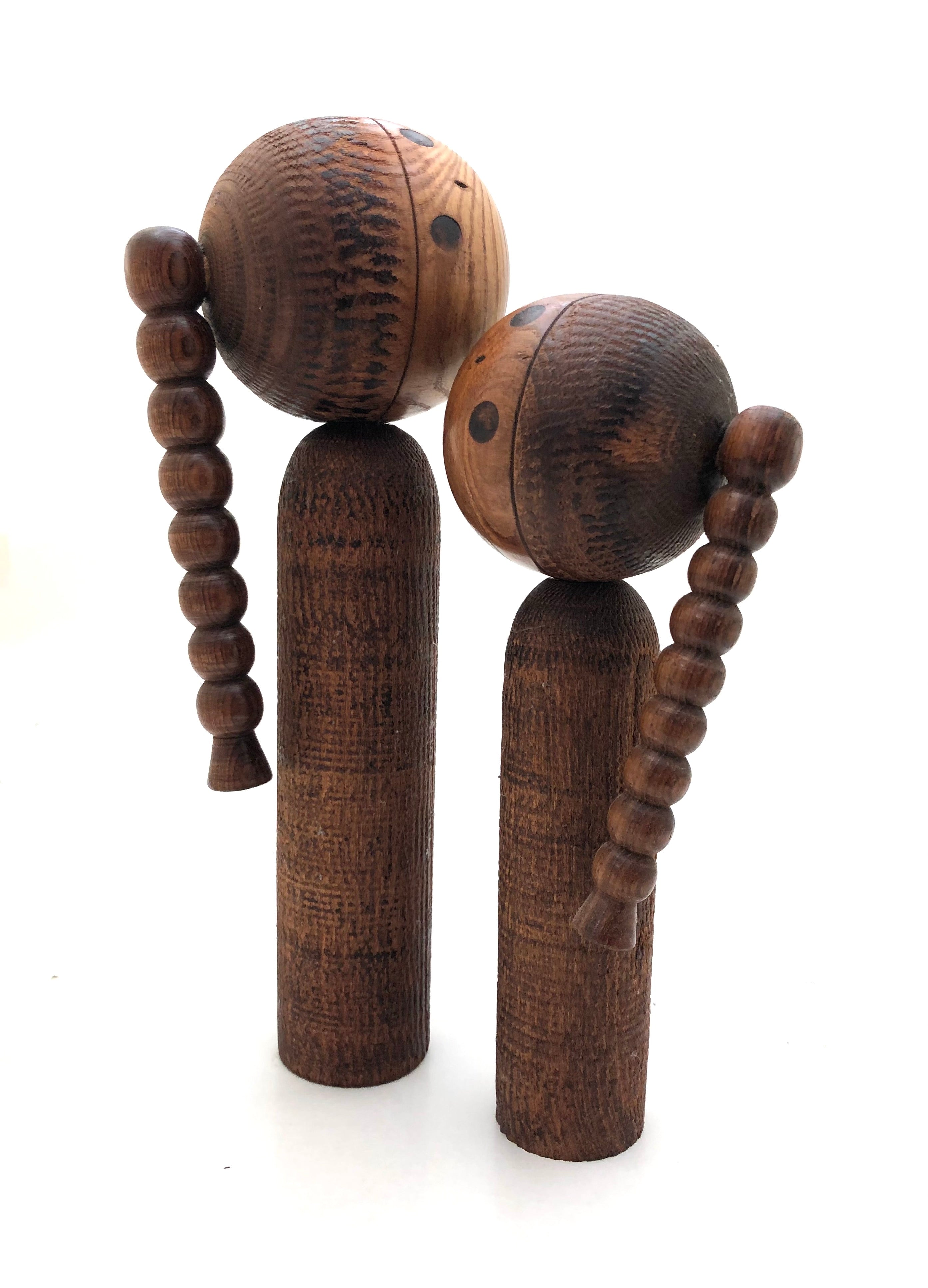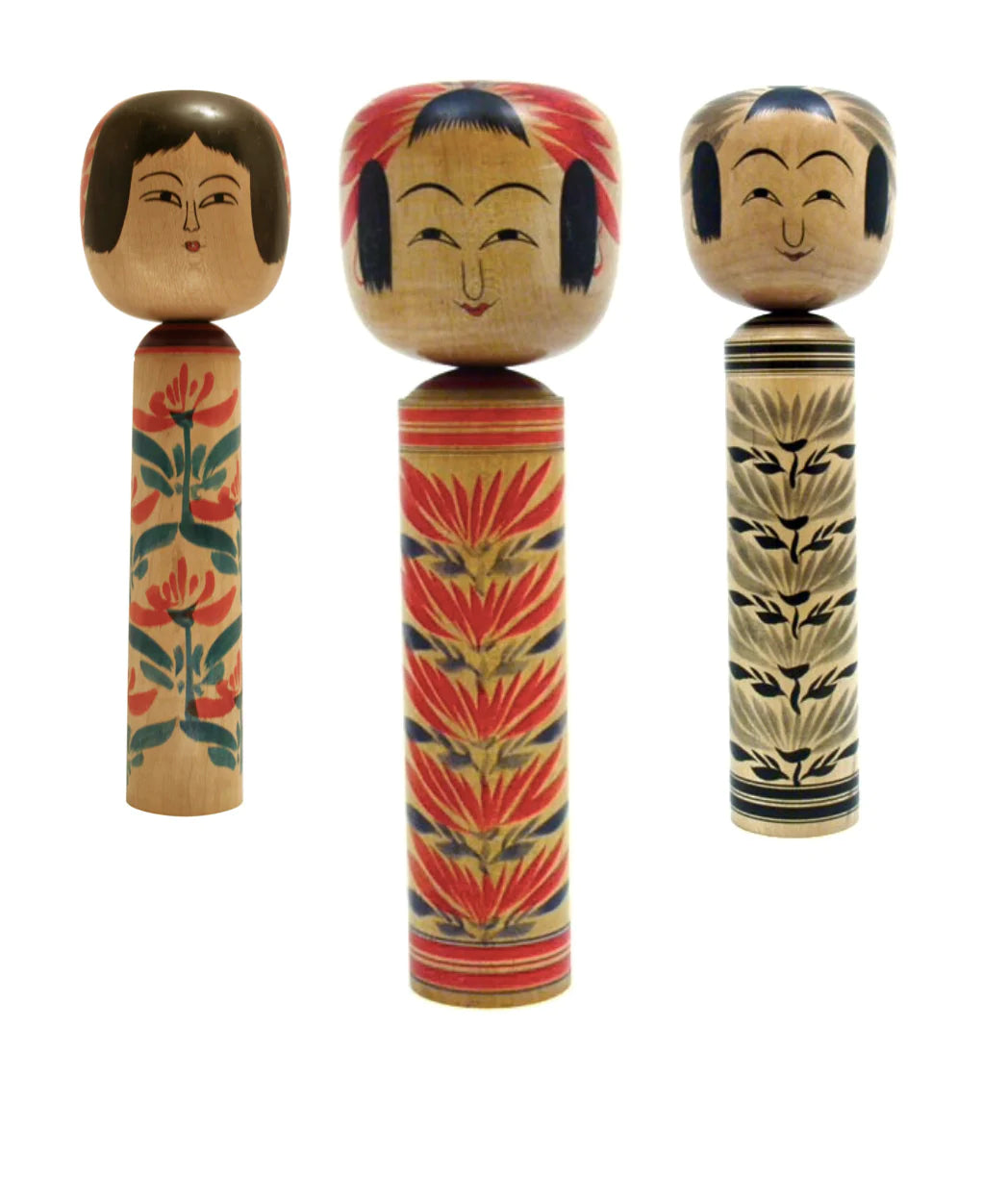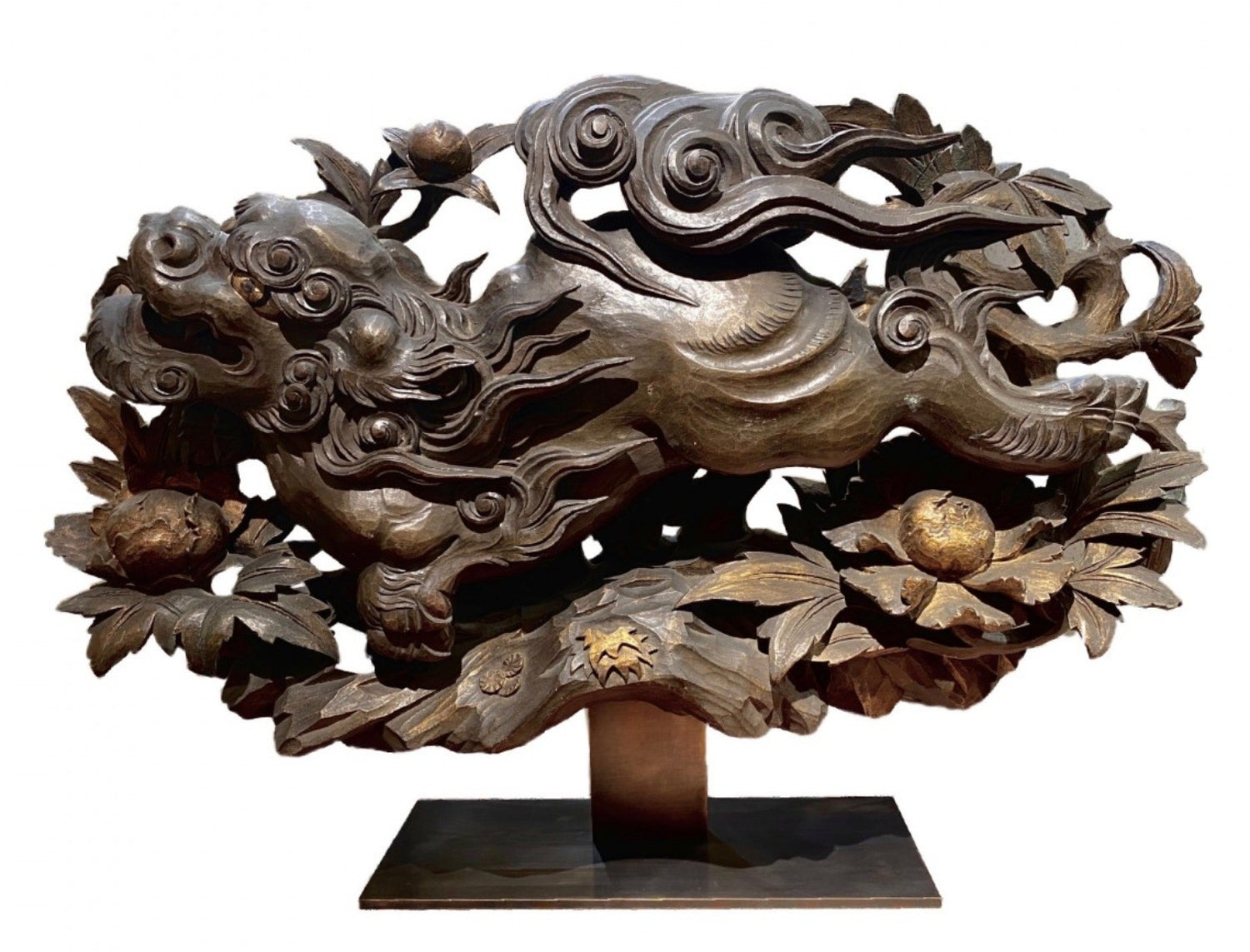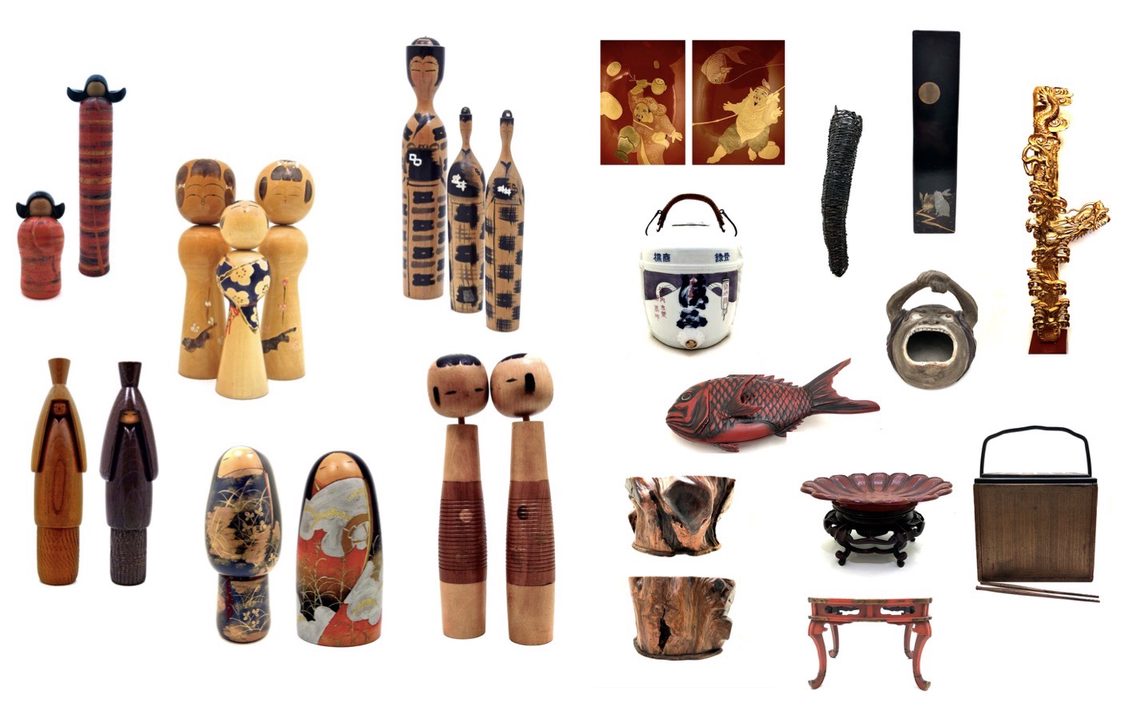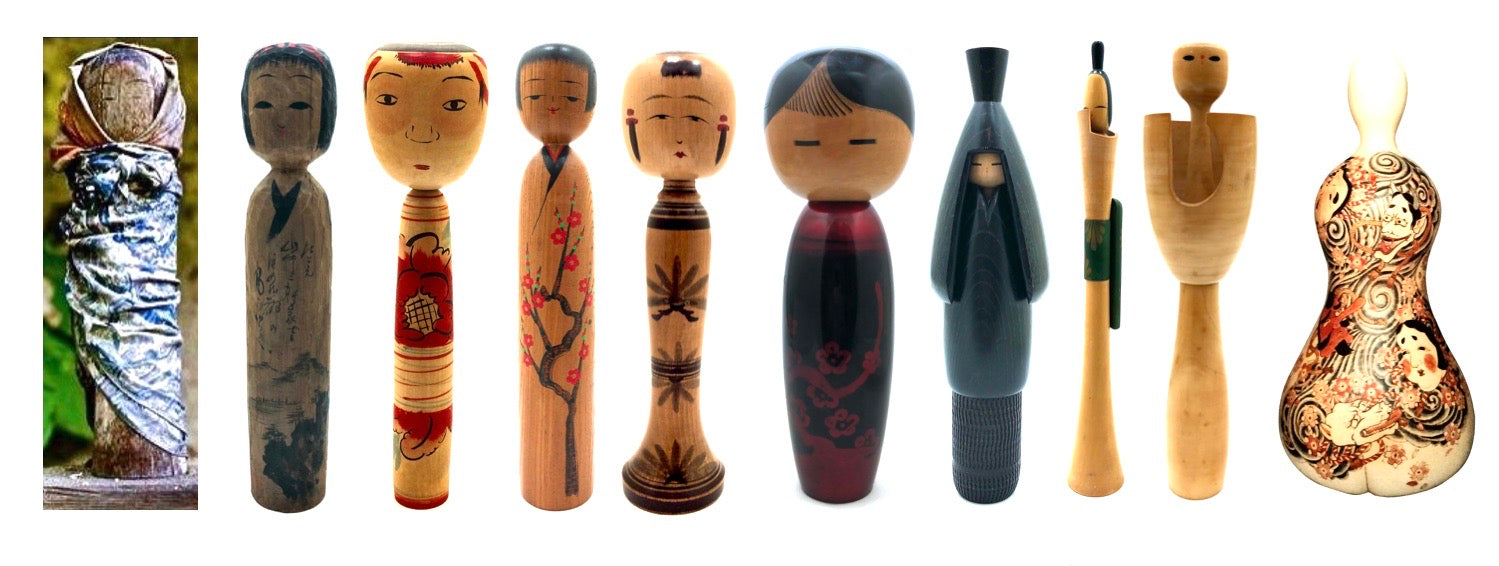MOTIF AND THE ART OF CARVED WOODEN FORMS
In Japan, and as originally influenced by China, the carving of wood objects in architecture and the decorative arts were added to celebrate natural and embellish natural surfaces with rich symbolism of textural and detailed designs. Without knowing it, the Japanese and Chinese adhered to our own William Morris’ maxim: “Have nothing in your house that you do not know to be useful or believe to be beautiful.” Carvings can therefore be enjoyed at their face value for the skill of the woodworker and for the beauty of their designs. Quality has always been in the eye of the beholder, but there are certain things to look for when assessing Asian Art and Folk Art, particularly when simple carving was meant to enhance spaces and celebrate objects within the environment.
Sometimes, Asian characters were incorporated into designs, either in their traditional format or as more stylized versions of natural elements. They were used to honor and celebrate beautiful art objects produced by other creators of the diverse disciplines of art and design. The most popular element seen in both architecture and object design is the use of Feng Shui ,“Fusui”, (a tradition of manipulating energy within space and around objects), and has been practiced across Northeast Asia, including China, Japan, and Korea. Specific characteristic elements seem to be recurrent: respect for nature as a model, humanization of religious iconography, and appreciation for material as a vehicle of meaning. Auspicious cultural characters, religious patterns, and human figures from mythology, history, literature, daily lives, and hierarchical clothing patterns form a basis for inspiration. Its’ relationship is particularly seen through symbolic floras, (spandrels and entwined leaves, Bamboo and Pine trees, branches and flowers), animals (foo dog [guardian lions], tiger, red-crowned Crane, Golden Pheasant, Peacock, Swan, Phoenix, Quail, Egret, and of course the Dragon). And last but not least Historic places and Environmental phenomenon, (temples, clouds, the Great Wave of Kanagawa and Mt. Fuji), are integrated elements in most design, particular woodworking.
The art of wood carving was passed down through many generations in countless towns and villages throughout Asia. The talent pool of skilled woodworkers who invest in undertaking the lengthy, painstaking work required for the most highly prized pieces produced by their ancestors are now difficult to find or evolving into new machine made art and forms or ornamentation.


